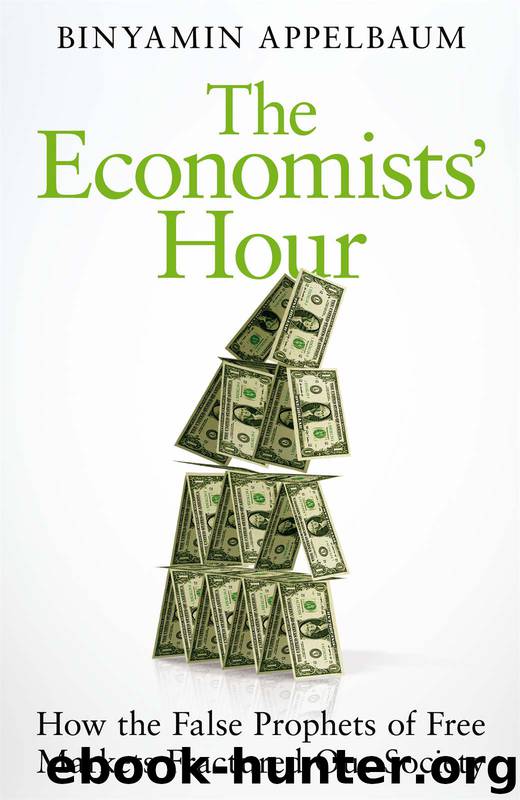The Economists' Hour by Binyamin Appelbaum

Author:Binyamin Appelbaum
Language: eng
Format: epub
Publisher: Pan Macmillan UK
“Growth with Equity”
For most of Latin America, the 1982 debt crisis was the beginning of a “lost generation.” Not until 1998 did the income of the average Mexican recover.64
For Chile, by contrast, the crisis marked the beginning of an economic boom driven by the export of its natural resources. This was a cornerstone of the Chicago Boys’ economic plan. In the words of Álvaro Bardón, a Chicago Boy who served as president of Chile’s central bank in the late 1970s: “If comparative advantage determines that Chile should produce nothing but melons, then we will produce nothing but melons.”65
The rewards of that strategy are highly visible. Santiago, the capital, commercial center, and by far Chile’s largest city, is a modern metropolis with a gleaming skyline, a financial district locals call “Sanhattan,” and streets full of immigrants who have come to Chile in search of a better life. Even the country’s problems increasingly are the problems of prosperity: obesity instead of hunger; consumer debt instead of deprivation.
Copper remains the most important export, but Chile has developed new lines in fruit, wood, and salmon. The pink fish is native to the Northern Hemisphere; there were no salmon off Chile’s coast fifty years ago. But in 1974, the American company Union Carbide identified the cold, sheltered waters off Chile’s southern coast as a promising venue for the new business of raising salmon in captivity. The military government, eager to attract investment, soon struck deals with Japanese and Norwegian companies, too. By the end of the century, Chile was the world’s second-largest salmon producer, trailing only Norway. Nightly flights carried fresh filets to Miami, and from there to supermarkets and restaurants across the United States.
Chile’s economic growth has drastically reduced extreme poverty in the country, and salmon farming has played the dominant role along the southern coast, where the industry employs more than seventy thousand people.66 But the profits are distributed unevenly. Transporting salmon from Chile to the Northern Hemisphere is expensive; for Chile to compete with northern fish farms, production has to be cheap. Salmon workers in Norway are paid more than three times as much as their counterparts in Chile.67 Under Pinochet’s regime, employers prevented the formation of labor unions. After the return of democracy, some workers formed unions, but Chilean law still imposes some of the most restrictive limits on collective bargaining anywhere in the developed world. In 2001, female workers at a salmon processing plant who earned an average of $130 a month went on strike seeking a raise of $15 a month. The company responded by firing 10 percent of the women, a literal decimation.68
Chile also has struggled to build on its successes in the relatively low-value business of producing food. The Danish shipping giant Maersk opened a $200 million factory in the Chilean port city of San Antonio in 2015, to build the refrigerated containers that it needs to ship Chilean fruit to foreign markets. The factory was celebrated as a breakthrough — evidence Chile’s economy was creating better-paying jobs.
Download
This site does not store any files on its server. We only index and link to content provided by other sites. Please contact the content providers to delete copyright contents if any and email us, we'll remove relevant links or contents immediately.
The Secret History by Donna Tartt(16623)
The Social Justice Warrior Handbook by Lisa De Pasquale(11489)
Thirteen Reasons Why by Jay Asher(7788)
This Is How You Lose Her by Junot Diaz(5772)
Weapons of Math Destruction by Cathy O'Neil(5037)
Zero to One by Peter Thiel(4824)
The Myth of the Strong Leader by Archie Brown(4789)
Promise Me, Dad by Joe Biden(4447)
Beartown by Fredrik Backman(4419)
Stone's Rules by Roger Stone(4415)
How Democracies Die by Steven Levitsky & Daniel Ziblatt(4399)
The Fire Next Time by James Baldwin(4343)
100 Deadly Skills by Clint Emerson(4079)
A Higher Loyalty: Truth, Lies, and Leadership by James Comey(4033)
Rise and Kill First by Ronen Bergman(4012)
The David Icke Guide to the Global Conspiracy (and how to end it) by David Icke(3882)
The Farm by Tom Rob Smith(3872)
Secrecy World by Jake Bernstein(3782)
The Doomsday Machine by Daniel Ellsberg(3731)
